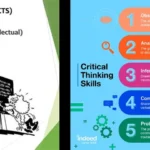What is the Enigmatic Moniker for a Miniature Narrative?:Are you a fan of stories that pack a punch in just a few words? Do you find yourself captivated by the art of storytelling, even in its tiniest form? Well, look no further because today we’re diving into the enchanting world of tiny short stories. Ever wondered what these bite-sized tales are called? In this blog post, we will explore the spectrum of short fiction, from flash fiction to microfiction and sketch stories. Get ready to be amazed by the power of pithy prose and the enduring appeal of these tiny tales. So, grab a cup of coffee, settle in, and let’s embark on this literary adventure together!
## Exploring the Realm of Brevity in Fiction: Tiny Tales and Their Impact
Understanding the Spectrum of Short Fiction
Short stories have long been celebrated for their ability to convey vivid narratives within a compact form. However, the literary world doesn’t stop there. It branches into even smaller segments of storytelling that demonstrate the power of brevity and meticulous word choice. The scope of short fiction varies, ranging from the relatively longer short story to the concise and punchy sketch story. Let’s delve into the nuances of these shorter-than-short forms.
Flash Fiction: The Art of Concision
Flash fiction, also known as a “short short story” or “microfiction,” is a genre that has gained immense popularity for its brevity and intensity. These narratives typically run from 100 to 1,500 words, demanding a writer’s precision in language and an ability to evoke a world within a few paragraphs. Flash fiction captures the essence of a story concisely and engagingly, often leaving readers with a lingering impact.
The Even Shorter: Microfiction
When we venture into the realm of stories that contain fewer than 300 words, we enter the domain of “microfiction.” This form requires a deft touch, as authors must create a compelling narrative in what might only be a few sentences. Despite its brevity, microfiction must still offer character, conflict, and resolution, albeit in a very condensed form.
The Sketch Story: A Glimpse Rather Than a Gaze
What is smaller than a short story? The answer is a sketch story, literary sketch, or simply sketch. These pieces of writing are generally shorter than a short story and contain very little, if any, plot. They focus on a moment, a character, or a specific setting, providing a snapshot rather than a full narrative arc.
Diving Deeper: A Range of Tiny Tales
Within the overarching category of short fiction, there exist various styles, each with its unique constraints and creative opportunities. Let’s explore some of these forms to understand the diversity within the genre.
Flash Fiction and Its Various Forms
While flash fiction is an umbrella term, it encompasses several sub-genres, each with its own word count limitations and stylistic quirks:
- The Micro: Often less than 300 words, these stories are about quick glimpses into a situation or emotion.
- The Drabble: A drabble is a story of precisely 100 words, challenging writers to tell a complete narrative within this tight word count.
- 55 Fiction: Even more challenging is 55 Fiction, where stories cannot exceed 55 words.
- The Six Sentence Story: As the name suggests, this form is about crafting a story using only six sentences.
- The One-Sentence Story: Pushing brevity to the extreme, these stories are composed of a single, impactful sentence.
- The Prose Poem: Though not always narrative, prose poems are lyrical and compact, focusing on language’s musicality and imagery.
- The Cadralor: A newer form consisting of five unrelated, thematically linked stanzas, the cadralor is an experimental approach to concise storytelling.
The Seven Archetypal Story Types
In addition to the various forms that tiny tales can take, it’s also intriguing to consider the types of stories that recur throughout literature. These are not confined by length but rather by the nature of their content and the journey they take the reader on. Here are the seven archetypal story types:
- Overcoming the Monster: Protagonist sets out to defeat an antagonistic force.
- Rags to Riches: An underdog story of achievement and triumph.
- The Quest: A journey filled with challenges and growth.
- Voyage and Return: A narrative of exploration and returning home transformed.
- Comedy: A lighter tale that often deals with misunderstandings and ends in harmony.
- Tragedy: A darker story where the protagonist typically fails or dies.
- Rebirth: A tale of renewal and transformation following a major downfall or challenge.
Flash Fiction: A Closer Examination
Flash fiction is not merely about telling a story in a limited number of words; it is about ensuring every word counts. This form is not a novel’s abstract or a lengthy narrative stripped down to its bare bones. Instead, it is a complete story, with a beginning, middle, and end, crafted to fit within a compact space.
The Elements of Effective Flash Fiction
To truly understand what makes flash fiction tick, we must consider its essential elements:
- Efficiency of Language: Every word must serve a purpose, advancing the plot or deepening character development.
- Economy of Detail: Descriptions are pared down to the most evocative and necessary.
- Open-Ended Narratives: Many flash fiction pieces leave room for the reader’s interpretation, often ending with an open or ambiguous conclusion.
- Strong Emotional Core: Despite their brevity, these stories often pack an emotional punch, resonating with readers long after they’ve finished.
The Challenge of Crafting Flash Fiction
Writing flash fiction is a test of a writer’s ability to imply more than is said and to condense complex human experiences into a few hundred words. It’s a literary puzzle where each piece—the setting, the characters, the conflict—must fit perfectly, leaving an imprint on the reader’s mind.
Microfiction: The Power of the Pithy
Microfiction is a subset of flash fiction that demands an even greater level of skill. With usually less than 300 words at their disposal, writers must evoke emotions, present characters, and sometimes even twist endings with only a handful of sentences. The beauty of microfiction lies in its ability to suggest a larger story beyond what is written, allowing readers’ imaginations to fill in the gaps.
Examples of Microfiction Mastery
The most famous example of microfiction is often attributed to Ernest Hemingway: “For sale: baby shoes, never worn.” In six words, this story hints at a tragic backstory, demonstrating the genre’s potential depth.
Sketch Stories: Painting with Prose
Sketch stories, or literary sketches, offer a different experience from flash and microfiction. They may not always tell a complete story but instead provide a vivid impression of a scene, character, or idea. These sketches are akin to an artist’s preliminary drawings, which capture the essence of their subject with a few well-placed strokes.
Characteristics of a Strong Sketch Story
A compelling sketch story will often:
- Focus on a singular moment or detail
- Use descriptive language to create a strong atmosphere
- Invoke curiosity or emotional response without the need for a traditional plot
Conclusion: The Enduring Appeal of Tiny Tales
The world of tiny tales is vast and varied, offering readers and writers alike an opportunity to explore stories in their most distilled form. Whether it’s the narrative punch of flash fiction, the concentrated impact of microfiction, or the evocative power of the sketch story, these forms challenge us to find depth in brevity. They prove that, sometimes, the smallest stories can leave the biggest impressions.
In a world where every word must carry weight, the tiny tale becomes a testament to the art of storytelling, demonstrating that narrative power isn’t necessarily linked to length, but to the potency of each word chosen. As we continue to celebrate the diversity within the literary realm, we recognize that whether it’s called a narrative, novella, tale, or sketch, the essence of a story lies in its ability to connect with us, to reveal truths, and to touch our hearts, no matter its length.
FAQ & Common Questions about Tiny Short Stories
Q: What is a tiny short story called?
A: A tiny short story is called a sketch story or literary sketch.
Q: How does a flash fiction differ from a short story?
A: Flash fiction is a genre of fiction that is defined as a very short story. While there is no set word count, flash fiction stories can be as short as a few words, whereas short stories typically run for several pages.
Q: What is a six-word micro story?
A: A six-word micro story is a form of storytelling where the entire narrative is condensed into just six words. It is a great way to showcase the power of concise writing and can evoke strong emotions.
Q: What are some synonyms for a short story?
A: Some synonyms for a short story include tale, story, novella, narrative, yarn, history, joke, and fairy tale.
Q: What is a novelette?
A: A novelette is a form of prose fiction that features imaginary characters and events. It has a lower word count than a novel or novella but a higher word count than other forms of fiction like short stories and microfiction. Typically, a novelette has a word count between 7,500 and 17,500 words.





